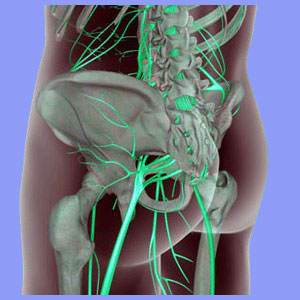
Complementary sciatica treatments are designed to work well in conjunction with traditional medical care practices. Complementary medicine used to be called alternative medicine, but the official designation has changed, as more and more non-traditional care providers and physicians alike have determined that they can provide better patient services, as well as make more money, working together than they can working apart.
The future of the complementary health service sector has never looked better, explaining the extreme growth in the number and availability of training programs for countless different types of therapists.
This essay examines some of the most popular and effectual complementary treatments for sciatica.
Complementary Sciatica Treatment Pros and Cons
Alternative care practices were long thought of as being outside the realm of traditional medicine. However, modern healthcare workers generally embrace a combined approach to care, since patients seem to like diversity in treatment and doctors love the profitability of combined care practices. By placing alternative caregivers under the flagship control of a medical doctor or physical therapist, they are offered legitimacy which patients respond to. This also allows many complementary caregivers to enjoy insurance coverage and higher prices for their services compared to those in dedicated private practice.
More treatment options certainly give patients a greater hope for finding relief; at least in theory. However, the majority of complementary care providers offer nothing more than symptomatic treatment for sciatica sufferers. Very few alternative medical therapies offer the potential for a cure and few are even designed to do more than provide temporary respite from pain. As long as patients are aware of this fact, I have no problem with any form of complementary treatment.
However, I have nothing but disdain for care providers who deceive patients into believing they can be forever cured using the treatment and do not back it up with results. I was victimized by enough of these types of providers to tell you that they are certainly out there in large numbers.
Types of Complementary Sciatica Care Options
There are vast numbers of complementary therapies used to treat sciatic nerve pain. Here are some of the most commonly available to help patients in association with traditional medical care:
Chiropractic for sciatica is the most common approach to non-medical care.
Ayurveda for sciatica utilizes the influence of healing practices derived in India. Yoga for sciatica is one of the common components of ayurvedic care.
Massage for sciatica can provide pain management without any risks or negative side effects.
Reiki for sciatica is a touch healing modality that appeals to spiritual patients.
Hypnosis for sciatica empowers the mind to control the generation and transmission of pain in the body.
Herbal sciatica treatment uses all natural botanical substances to reduce symptomatic expressions.
Acupuncture for sciatica and acupressure for sciatica are based on traditional Chinese medical practices that can improve health and minimize symptoms.
Trigger point treatment is a focused therapy often used by massage practitioners and chiropractors.
Dietary sciatica treatment may provide relief fro some patients through actual efficacy or placebo effect.
Sciatica exercise treatment utilizes fitness to combat pain and improve physical functionality.
Tips on Complementary Sciatica Treatments
I miss the old days of alternative being alternative and medical being medical. At least you knew what you were getting. Now, so many alternative caregivers are nothing more than puppets in a doctor’s army of propaganda peddlers. I like the best combined care practices and hate the worst, since they both represent very different ideas of what it is like to bring traditional medicine and alternative medicine together.
Ideal combined care is based on the concept that patients should benefit above all else from varied therapy choices, since these doctors recognize that cures and effective treatments are not universal. The negative side to this practice is when providers come together for the exclusive purpose of making money, most often at the expense of patients and by using fraudulent insurance billing practices.
During my career in professional investigation, I enjoyed every time one of these crooks was prosecuted. That is what you deserve when you place your financial whims above the healthcare needs of your patients. However, let’s give doctors and therapists the benefit of the doubt. Most are working together for the right reasons, so let’s support their efforts and hopefully use their partnerships to help each one of us to enjoy better treatment results for our chronic pain.
Sciatica > Alternative Medicine for Sciatica > Complementary Sciatica Treatments





